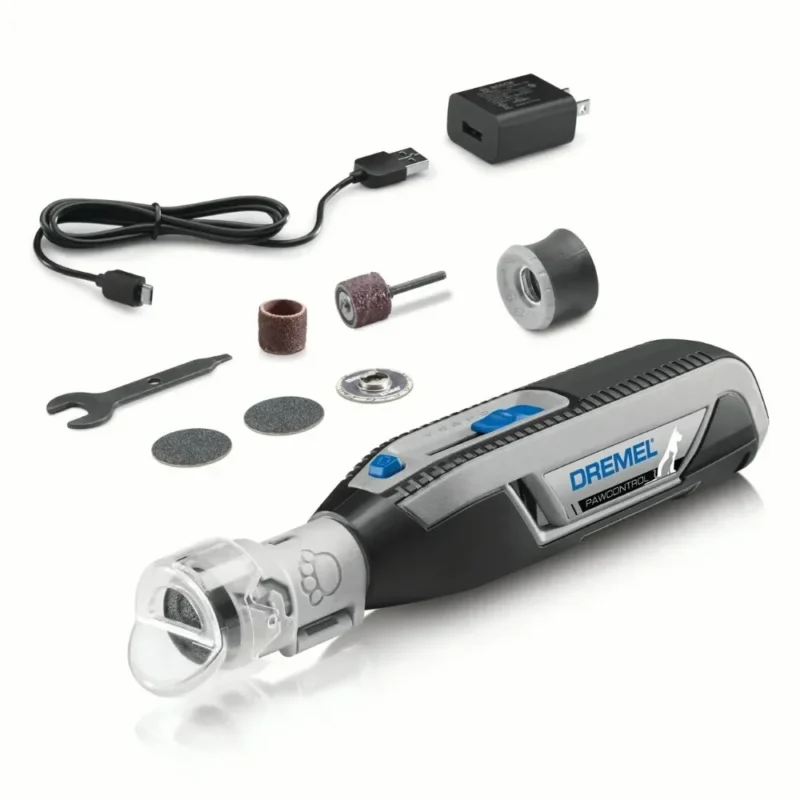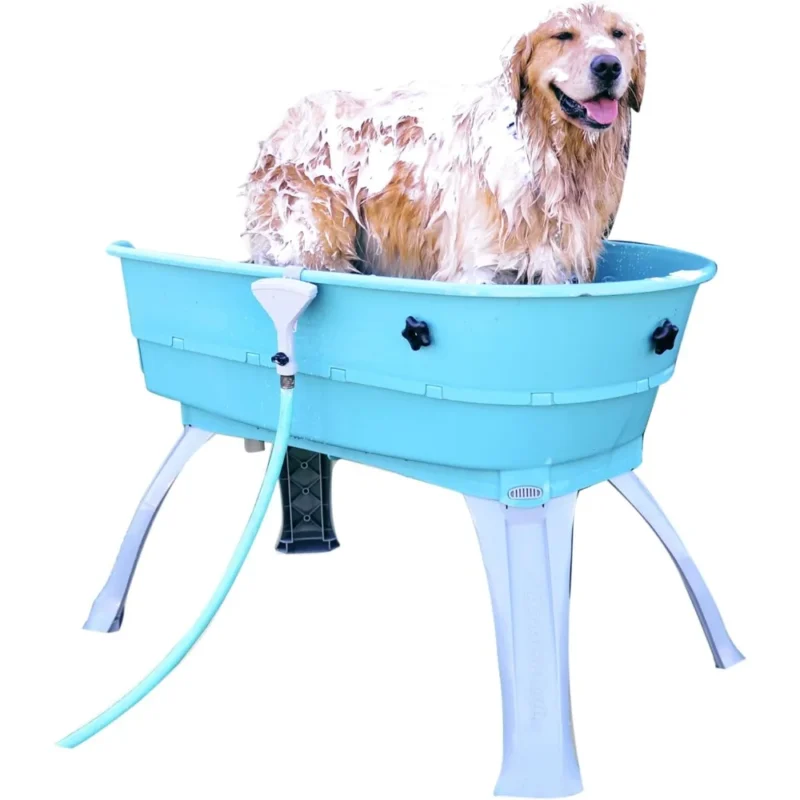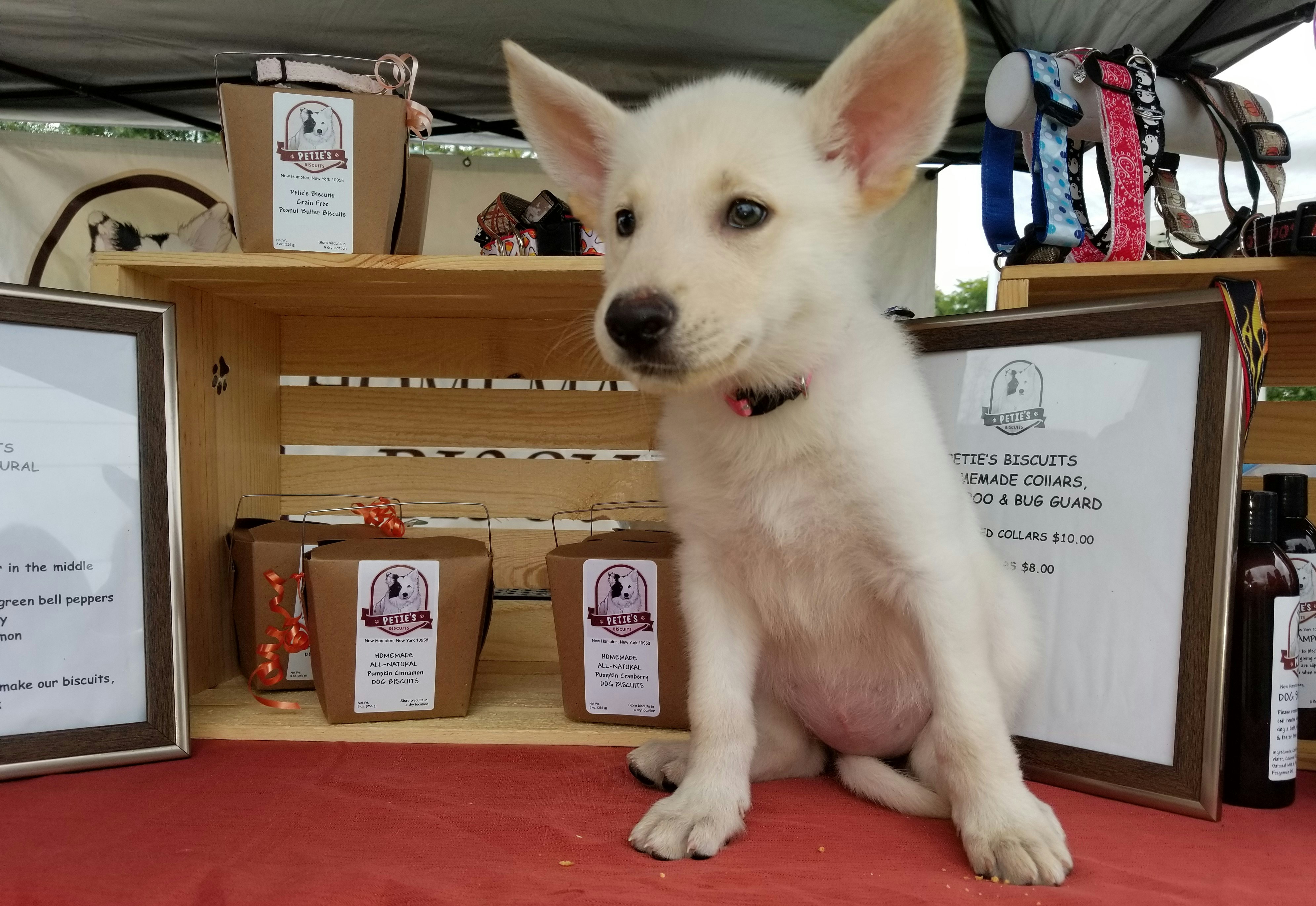Introduction: Welcoming a New Puppy
Bringing a new puppy into your home is an exhilarating experience that fills the household with joy and energy. The decision to invite a furry companion into your life marks the beginning of a rewarding journey filled with affection, loyalty, and endless moments of playfulness. However, along with the excitement of welcoming a puppy comes a range of responsibilities that prospective pet owners must consider. Understanding what it takes to care for a new puppy is crucial for ensuring both the pet’s well-being and a harmonious home environment.
Preparation is key when it comes to introducing a new puppy to a household. A thoughtfully curated checklist of essential items can facilitate this transition, helping to minimize stress for both the pet and the owner. Essential items may include food bowls, appropriate food, toys, grooming tools, and a comfortable bed. Moreover, ensuring a safe environment is imperative; you will want to puppy-proof your home to eliminate hazards that could potentially harm your new companion.
By taking the time to prepare in advance, new pet owners can create a welcoming space that alleviates any anxiety the puppy may experience during the initial adjustment period. The first few days in a new environment can be overwhelming for a puppy, making it essential to have everything ready, from essential supplies to designated areas for the puppy to relax. Additionally, educating yourself on training routines, diet specifics, and health care needs can significantly enhance the overall experience of pet ownership.
In this blog post, we will outline 15 essential items that are crucial in making sure your new puppy feels secure, comfortable, and loved. Having a comprehensive checklist allows for a smooth transition, making your new furry friend feel at home in no time. Remember, a well-prepared environment serves as a foundation for a healthy and flourishing relationship between you and your new puppy.
Dog Food and Feeding Supplies
When bringing a new puppy into your home, one of the most critical decisions involves selecting high-quality dog food that meets your puppy’s specific dietary needs. Puppies require a diet that is rich in nutrients to support their rapid growth and development. It is essential to choose a puppy formula that contains adequate levels of protein, fat, vitamins, and minerals tailored for developing dogs. A well-balanced diet not only supports your puppy’s physical health but also contributes to their cognitive development and overall well-being.
In addition to selecting the right food, it is advisable to invest in quality feeding supplies. A sturdy food bowl is essential for serving meals, while a durable water bowl ensures that your puppy stays hydrated. Look for bowls made from safe materials that are easy to clean, as hygiene is paramount in maintaining your puppy’s health. Opting for non-slip bases can also help prevent spills during mealtime, making feeding time more enjoyable for both you and your pet.
Establishing a feeding schedule is equally important for ensuring proper nutrition. Consistency in mealtime helps manage your puppy’s digestion and sets a routine that can ease anxiety. Most puppies benefit from three to four meals a day, depending on their age and breed. As they grow, you can gradually transition to two meals per day. It is vital to monitor their weight and adjust portions as necessary, ensuring that their nutritional intake aligns with their growth stages. Implementing these practices not only enhances their dietary habits but also fosters a healthy relationship between you and your new puppy.
Puppy Crate and Bedding
The selection of an appropriate crate and bedding for your new puppy is crucial for their safety, comfort, and training. A puppy crate serves multiple essential functions. First and foremost, it is an effective tool for housetraining. Puppies instinctively avoid soiling their sleeping areas, and hence, a properly sized crate can encourage them to hold their bladder until they are taken outside. Moreover, a crate provides a secure space for your puppy during car rides, keeping them safe and preventing distractions while you drive.
When choosing a crate, ensure that it is spacious enough for your puppy to stand, turn around, and lie down comfortably. If the crate is too large, your puppy may treat one end as a bathroom. Adjustable crates are available, allowing you to modify the size as your puppy grows. As for bedding, various options exist to promote your puppy’s well-being. Soft, washable cushions or blankets can provide a cozy resting area, complementing the crate’s comfort. Look for bedding materials that are durable and easy to clean, as accidents may occur during the training phase.
Another important aspect to consider is your puppy’s behavior and preferences. Some puppies may appreciate the warmth of a fleece blanket, while others might prefer the sturdiness of a dog bed with memory foam. Selecting materials that can withstand the chewing tendencies of young dogs is also advisable. Incorporating familiar scents into the bedding can further ease the transition into their new home. Ultimately, the right crate and bedding not only enhance your puppy’s comfort and security but also streamline the house training process, fostering a conducive environment for your pet’s development.
Collar, Harness, and Leash
When welcoming a new puppy into your home, a collar, harness, and leash are essential components for their safety and comfort during outdoor activities. The right combination will not only provide control during walks but will also ensure your puppy’s safety should they find themselves in an unexpected situation.
When selecting a collar, it is important to choose one that fits snugly yet comfortably around your puppy’s neck. The collar should allow for at least two fingers to fit between the collar and your puppy’s skin. Consider adjustable collars that can grow with your puppy as they mature. Opt for materials that are durable yet gentle on their skin, such as nylon or leather, ensuring that the collar does not cause irritation. Additionally, adding identification tags with your puppy’s name, your contact details, and any pertinent medical information is crucial for their safety in case they go missing.
A proper harness is an excellent alternative or complement to a collar, particularly for puppies that tend to pull on the leash. Harnesses distribute pressure across a larger area of your puppy’s body, reducing the risk of injury to their neck and throat. When selecting a harness, ensure it is specifically designed for puppies and is made from soft, breathable materials. Pay close attention to size charts and your puppy’s weight and breed to find the appropriate fit.
The leash is equally important as it serves as a vital link between you and your puppy during walks. A lightweight nylon or cotton leash is suitable for most puppies, with lengths of 4 to 6 feet being optimal for training and general daily use. Reflective or brightly colored leashes can also enhance visibility during low-light conditions. By ensuring that you have a proper collar, harness, and leash, you can provide your puppy with a secure and enjoyable outdoor experience.
Health and Grooming Supplies
When welcoming a new puppy into your home, ensuring its health and hygiene should be a primary concern. One of the essential aspects of caring for your puppy includes obtaining a variety of health and grooming supplies that will contribute to its overall well-being.
First and foremost, it is crucial to schedule a visit to the veterinarian for an initial wellness examination. This appointment allows you to establish a vaccination schedule tailored to your puppy’s needs. Vaccinations are vital for protecting your puppy against various diseases, so it is essential to stay up to date with them. Additionally, your veterinarian can advise on essential flea and tick prevention treatments, which play a significant role in protecting your puppy from parasites that can cause health issues.
In addition to veterinary care items, grooming supplies are equally important for maintaining your puppy’s hygiene. A good quality brush is essential to keep your puppy’s coat clean and free of tangles. Depending on your puppy’s breed, specific brushes or grooming tools may be more suitable. Regular grooming not only helps to maintain a healthy coat but also allows you to keep an eye on your puppy’s skin condition. Shampoos designed specifically for puppies or sensitive skin types should be included to ensure a safe and gentle bathing experience without drying out their skin.
Nail clippers are another indispensable item on your checklist. Overgrown nails can lead to discomfort and, in some cases, injury to your puppy. Regular nail trimming should be a routine part of your puppy’s grooming schedule. Additionally, incorporating oral hygiene products such as toothpaste and toothbrushes designed for dogs can help maintain your puppy’s dental health, preventing plaque buildup and other potential oral health issues.
By equipping yourself with the right health and grooming supplies, you can ensure that your puppy receives the care it needs to thrive in its new environment.
Toys for Physical and Mental Stimulation
When introducing a new puppy to your home, it is essential to consider the role of toys in their development. Toys serve not only as a source of entertainment but also as vital tools for promoting physical activity and mental stimulation. Engaging your puppy with the right types of toys can help channel their energy towards constructive play, ultimately supporting their overall growth and well-being.
One of the primary categories of toys to consider for your puppy are chew toys. These toys provide a satisfying outlet for your puppy’s natural instinct to chew, alleviating teething discomfort and preventing destructive chewing on household items. Look for chew toys made from safe, durable materials that can withstand your puppy’s enthusiastic chewing. Brands that emphasize safety and durability often ensure that their products are free from harmful substances, providing reassurance as your puppy explores their new environment.
Interactive toys also play a critical role in a puppy’s development. These toys are designed to prompt problem-solving and encourage your puppy to think actively. Options such as treat-dispensing toys can motivate your puppy to figure out how to obtain a reward, providing both mental engagement and physical movement. Additionally, toys that require your puppy to manipulate pieces can enhance their dexterity and cognitive skills.
Puzzle toys are another excellent choice for stimulating your puppy’s mind. These toys typically involve hiding treats or toys that your puppy must uncover through various actions, providing a rewarding challenge. By regularly rotating their selection of toys, you can maintain your puppy’s interest and prevent boredom, ensuring they remain engaged while fostering a love for play. The right toys not only keep your puppy active but also build a strong foundation for learning and development, setting the stage for a well-adjusted canine companion.
Training Supplies
When welcoming a new puppy into your home, acquiring the appropriate training supplies is essential for successful acclimatization and obedience. Pup training is not only about teaching commands but also crucial for establishing communication between you and your pet. Early training and socialization are vital in forming a well-adjusted canine companion. To facilitate this process, several tools can greatly enhance your training efforts.
One commonly utilized item is training pads. These pads can assist in housebreaking your puppy, providing a designated area for them to relieve themselves. Not only do they promote cleanliness, but they also help establish a routine for your puppy, which is fundamental during their formative months. The ease of use and convenience offered by training pads can alleviate the stress associated with managing a new pet.
Additionally, clickers play a pivotal role in modern training techniques. A clicker serves as a precise marker that can communicate to your puppy exactly when they have performed a desired behavior. Coupled with positive reinforcement, such as treats, the click serves to solidify learning through a reward-based system. This method not only reinforces good behavior but ensures that your puppy becomes accustomed to responding to commands.
Moreover, treat bags are indispensable. Having treats close at hand allows for immediate rewards, which is vital when your puppy displays appropriate behavior. This instant gratification encourages them to repeat the actions you want to reinforce, enhancing your training sessions. Investing in these training supplies will undoubtedly lead to a more harmonious relationship between you and your furry friend. In essence, effective communication through these tools can facilitate a more enjoyable training experience for both the owner and the puppy.
Pet Insurance and Health Records
The decision to obtain pet insurance is a crucial step for any new puppy owner. Pet insurance can help mitigate the costs associated with unexpected veterinary bills, ranging from routine check-ups to emergency medical treatments. A variety of insurance policies are available, including accident-only plans, comprehensive coverage that includes illness and injury, and wellness plans targeting routine care. It is essential to compare these policies, taking note of coverage limits, exclusions, deductibles, and the network of veterinarians. Understanding the details of what a policy covers can help in making an informed decision that provides the best protection for your puppy.
One critical aspect to consider when selecting insurance is the age and breed of your puppy, as certain breeds may be more prone to specific health issues. Additionally, some insurance policies impose waiting periods before coverage begins, which is an important factor to keep in mind. Searching for policies that offer lifetime coverage may also be beneficial, ensuring your puppy remains protected as they transition into adulthood.
Alongside securing pet insurance, maintaining comprehensive health records for your puppy is vital. These records should encompass vaccination histories, treatments, medications, and any encountered health issues. Accurate health documentation not only helps facilitate smoother veterinary visits but also ensures that your puppy receives appropriate care. This information is particularly crucial when introducing your puppy to new vets or when traveling, as it aids in providing complete and accurate medical histories. Additionally, having organized health records can assist in monitoring your puppy’s growth, vaccinations, and preventive care, thereby promoting overall health and well-being.
Creating a Safe Space for Your Puppy
Establishing a safe space for your new puppy is critical for their well-being and integration into your home. A well-defined area not only provides a physical sanctuary but also serves as a comfort zone where your puppy can retreat during times of stress or excitement. Begin by selecting a designated area in your home, ideally a quiet corner or a specific room where your puppy can feel secure.
When setting up this safe space, it is essential to puppy-proof the area. Remove any hazards such as wires, toxic plants, or small objects that may pose a choking risk. Consider using baby gates to restrict access to certain areas and prevent unmonitored exploration, which can lead to accidents or dangerous encounters. Moreover, the chosen safe space should consist of a comfortable bed, blankets, and toys that are appropriate for your puppy’s size and chewing habits.
Socialization is another crucial aspect of creating a safe environment for your puppy. While allowing them to explore their new surroundings, it’s important to introduce them to various stimuli, including sounds, smells, and even visitors gradually. This exposure helps your puppy develop confidence and adaptability, ensuring they do not become overly anxious or frightened in new situations. Ensure that interactions are positive and supervised, especially in the early stages.
Also, incorporate regular breaks within the designated space, encouraging your puppy to enjoy moments of solitude. This practice not only reinforces their comfort with their safe zone but helps to build independence. A well-structured safe space effectively contributes to a calm environment where your puppy can feel secure, reducing anxiety and fostering a trusting relationship with their new family.
Conclusion: Preparing for a Lifelong Commitment
Welcoming a new puppy into your home is a significant event that demands careful consideration and preparation. Having a well-thought-out checklist is essential in ensuring a smooth transition for both the puppy and the owner. This checklist serves as a comprehensive guide to the necessities that will facilitate your new companion’s adjustment to their new environment while laying the foundation for a healthy and fulfilling life together.
The journey of pet ownership extends beyond the initial excitement of bringing home a new puppy. It encompasses a range of responsibilities that include providing proper nutrition, veterinary care, training, and socialization. Each element on the checklist plays a pivotal role in addressing these responsibilities. For instance, investing in quality food and essential supplies will greatly impact the puppy’s health and well-being in their formative stages. Likewise, establishing a routine and consistent training will foster a trusting relationship and help your puppy develop good behavior patterns.
Moreover, the joy of nurturing a pet is unparalleled. Through daily interactions, training sessions, and shared activities, owners experience enduring companionship and unconditional love. A thoughtful approach to pet ownership can also promote emotional growth and a sense of responsibility in individuals, particularly children, who will witness the significance of caring for another being. Therefore, when compiling your ultimate puppy checklist, it is crucial to recognize the long-term commitment required in this relationship.
In summary, preparing for a new puppy involves more than just selecting supplies; it is about creating a nurturing environment that fosters growth and companionship. By adhering to a well-structured checklist, you can embark on this rewarding journey with confidence and enthusiasm, ensuring that both you and your new puppy enjoy a fulfilling experience together.













